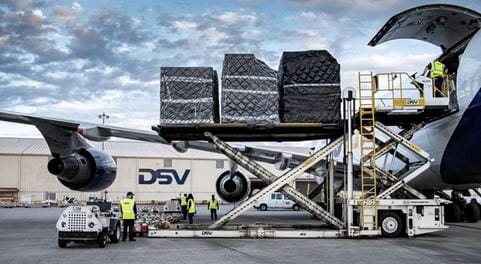Important updates regarding Import Control System (ICS) 2.0
DSV informs about a current change of the customs process within the Import Control System 2.0 (ICS 2.0)

On Dec. 31, 2022 and March 01, 2023, regulatory changes for ICS 2.0 will take effect, affecting all air cargo shipments flying into or through the European Union, Switzerland and Norway.
ICS stands for Import Control System, which is the European Union system now used to process the ENS (Entry Summary Declaration). With the ICS system, customs authorities perform an electronic security check for goods destined for or passing through the EU security zone (EU, CH, NO).
At DSV Air & Sea AG, we will need to incorporate this additional information into our bookings with airlines starting with the new year.
Please make sure that we have the correct information available to ensure a smooth air cargo process as today.
How you will comply with the ICS2 requirements:
- As a company conducting customs activities in the European Union, an Economic Operators Registration and Identification (EORI) number from one of the EU Member states’ customs authorities is needed. It has to be ensured that this EORI number is shared, if applicable, with your shipper/seller. As a shipper/seller sending freight to the countries in scope, it has to be ensured that the EORI number of your consignee is obtained upfront. For Switzerland, Norway and Northern Ireland, where no EORI is available, the VAT registration number may be provided.
- Please include an accurate goods description for each article of the consignment
- as well as the corresponding Harmonized Commodity Code (HS Code, minimum first 6 digits).
The necessary information above should be provided to DSV Air & Sea AG in Switzerland in addition to the shipment details as already shared and as part of the commercial documents transfer and/or EDI messaging today.
Submitting incorrect or inaccurate data, as well as missing data elements, could lead to:
- Rejected declarations or customs intervention, with possible sanctions imposed for non-compliance
- Consignments stopped or delayed at customs
- Enhanced security screening
- Flight delays
About ICS 2.0:
ICS 2.0 is an entirely new system that replaces ICS 1.0 and will be rolled out in three phases:
Phase 1 was implemented on March 15, 2021, and impacts air express and mail carriers. Express and mail carriers will be required to transmit a preload record before cargo is loaded onto the aircraft in the country of departure.
Phase 2 is expected to be implemented on March 1, 2023, and will impact all air cargo imported into the affected countries. A preload record must be submitted in ICS 2.0 for all air cargo entering or transiting the EU, CH and NO. In addition to these preload records, operators must complete ENS data prior to arrival.
Phase 3 is expected to be implemented on March 1, 2024 and will impact all other modalities (ocean, road and rail).
Changes since Dec. 31, 2022:
On Dec. 31, 2022, the EU also introduced changes to the temporary storage declaration. Once goods are unloaded from an aircraft, they will be placed in temporary storage. The airline or ground handler must submit a temporary storage declaration before the aircraft arrives at the airport.
Since December 31, 2022, the temporary holding statement must include the following information at the HAWB and MAWB levels:
1. 6-digit HS (Harmonized System) code.
2. Economic operator registration and identification number (EORI) of the consignee and declarant.
This data is the same as that required for ICS 2.0, which was introduced on March 1, 2021.
In preparation for the upcoming changes, it is also important that a correct commodity description is entered into the HAWB and MAWB. This means that the description of goods must clearly indicate to customs authorities what type of goods they are, what their purpose is, and what they consist of. Vague descriptions such as samples, spare parts, clothing, etc. should be avoided.
An example of a wrong and a right description of goods: Wrong: Handicrafts / Correct: Vases, bowls made of ceramics.
The European Commission has published a guide on acceptable and unacceptable descriptions of goods. The link to it can be found here.
More information about ICS2 is available at
EU Import Control System (ICS2)
Haben Sie Fragen? Avez-vous des questions? Avete domande?
Our experts are ready to help. Get in touch and we'll find the solution you need.

